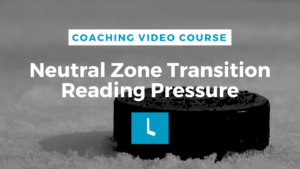(Transcribed from How to Play Hockey: Our Minor Hockey Coaching Course.)
We’re not talking about having the secret service help you around the ice here. The ability to buy time and space will make you a better player, without any need to improve your actual skating and puck skill sets. This video is worth watching if you want to have more time to make decisions.
Definition of Puck Protection: Puck protection is the ability to shield the puck, thereby buying yourself more time and space. This can be done by using your body or by putting the puck into a safe area.
[maxbutton id=”2″ ]
Protecting the puck using the body means keeping yourself between the puck and the attacker who is trying to get it. You can do this by shielding the puck and moving left or right, like a soccer player often does. This allows you to buy yourself more time while looking for your next play.
I like to tell young players that just by being a good puck protector, even if their hand skills have not improved, they can become better players. This is because it allows the player time to make a better play. So rather than exposing the puck to the defender where you have it, and the defender is coming to get it, you can turn your back and shield it.
Another way to protect the puck and keep it in a safe area is when you are attacking against the defender and you know that the defender has an advantage. Either they are a strong player, or they are not moving very quickly to chip the puck. Pass behind that player and go after the puck. This will keep the puck in a safe place rather than turning it puck over right here or allowing a defender to take it and go. We don’t want to lose the puck in a prime strong area. We are talking strategy here.
We do not believe that a ‘dump and chase style’ is correct for youth players. Instead, we like to see young players hang on to the puck, try to make plays, move the puck and keep possession. However, sometimes chipping the puck by making an indirect pass when moving it allows you to protect the pucks and keep it in a safe area.
Example: Areas of the ice just inside the blue line, where hanging onto the puck and losing it can be very costly to your team.
The idea of cost protection shield in the puck attacker is a very important skill all over the ice.
Looking to download half ice hockey practice plans, goalie drills for teams (not a goalie coach?!) or small area games drills? We’ve got you covered too. Click here. Perfect for recreational level coaches.





